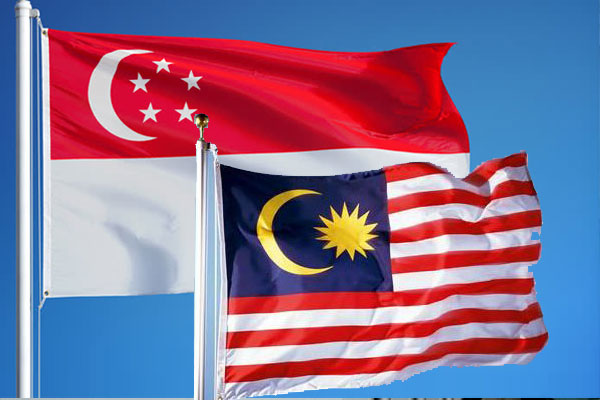Singapore-Malaysia to reopen water talks?
June 25, 2018 | Expert Insights

Malaysian Prime Minister Mahathir Mohamed has indicated that his government may attempt to re-work an agreement to provide fresh water to Singapore. The 1962 agreement allows Singapore to buy up to 250 million gallons of water a day at 3 sen ($0.007) per 1,000 gallons.
Background
Malaysia is a federal constitutional monarchy located in Southeast Asia. It consists of Peninsular Malaysia and the states of Sabah and Sarawak. Malaysia was colonised by the British in the 19th Century. By 1819, the British had captured Singapore, Penang, and Malacca, and the three regions were directly ruled by Britian as the “Straits Settlements”. Malaysia gained independence from the British in 1957 and the Federation of Malaysia, comprising Malaysia, Sarawak, and Singapore, was officially declared in 1963. Singapore left this federation in 1965, by mutual agreement, after widespread ethnic and political tensions.
Malaysia and Singapore have often had prickly relations. The two countries have disputes over deliveries of freshwater to Singapore, land reclamation works, bridge construction, and maritime boundaries in the Johor and Singapore Straits. In a 2008 dispute over territory in the Singapore Strait, the International Court of Justice awarded the Pedra Branca Islands to Singapore and the Middle Rocks to Malaysia. It did not rule on the disputed South ledge. However, the two nations also have long-standing economic, cultural, and military ties.
Singapore’s water
According to the Singaporean government, Singapore’s water demand is currently 430 million gallons a day (mgd). This demand is expected to almost double by 2060. However, Singapore is currently hugely dependant on imported water, primarily from Malaysia.
Malaysia and Singapore-+ had two key agreements on water. First was the 1961 agreement, which expired in 2011. Under this agreement, Singapore was allowed to draw an unlimited amount of water from the Tebrau and Scudai Rivers, in return for treating 12% of the amount for Malaysia’s Johor region. The 1962 water agreement allows Singapore to draw up to 250 mgd from the Johor River until 2061, at 3 sen ($0.007) per 1,000 gallons. In return, Singapore treats 2% of the water purchased and sells it back to Malaysia at 50 sen ($0.12) per 1,000 gallons. The water agreements are ratified by the Government of Malaysia in the Separation Agreement signed in 1965 and affirmed by the UN.
Singapore has worked on diversifying its water sources in the past decade. Other major sources of water are local catchment, desalinated water, and NEWater (treated waste water). The Singapore government hopes that NEWater and desalination will meet up to 85% of Singapore’s water demand by 2060.
Analysis
In a recent interview, Malaysian Prime Minister Mahathir Mohamad indicated that he may restart negotiations on the 1962 water agreement with Malaysia. Mahathir told Bloomberg that the current arrangement was “too costly.”
The arrangement has been the basis of a long-standing disagreement. The Malaysian government argues that prices should increase to reflect the changing times, however, Singapore argues that it adds value by treating the water. "I think it is manifestly ridiculous that we should sell water at 3 sen per thousand gallons. That was okay way back in the 1990s or 1930s. But now what can you buy with 3 sen? Nothing,” PM Mahathir said in an interview with Channel News Asia. The negotiations have not yet started, and the PM indicated that formal talks may be take some time.
Malaysia-Singapore ties during Mahathir’s previous term from 1981-2003 were chilly, and have been described by opposition as a time of “confrontational diplomacy.” At one point, the PM had threatened to cut water to Singapore; former Singapore Prime Minister Lee Kuan Yew threatened military retaliation.
Mahathir came into power this year on a reformist agenda. Since his election in May, he has adopted what observers have called a “muscular foreign policy.” Earlier this year, it was announced that Malaysia would be ending their multi-billion dollar high-speed rail (HSR) project with Singapore. Mahathir claimed that the project would cost Malaysia RM110 billion ($27.5 billion). The previous government, which has been hounded by corruption charges, had reaffirmed the HSR project and the 1962 water agreement this January.
Prime Minister Mahathir has also been critical of the Chinese infrastructure projects signed by the Najib government under Beijing’s Belt and Road initiative. In a recent interview with Bloomberg, Mahathir noted that the new government could “slow down” and “defer” Chinese projects due to a lack of funds. This could include the East Coast Rail Link (ECRL), which is aimed at connecting the South China Sea at the Thai border with Straits of Malacca shipping routes, and two gas pipelines.
Mahathir has maintained that these measures are part of his attempt to cut government debt. Lim Guan Eng, Malaysia’s new finance minister, has estimated that debt currently stands at approximately RM1 trillion ($250 million or 80.3% of GDP.)
Assessment
Our assessment is that while Singapore has been working to diversify its water supply, it is still highly dependent on Malaysia. With rapidly diminishing resources, urbanisation, and shifting weather patterns, water has become a critical resource. Furthermore, we believe that the PM Mahathir is focussed primarily on cutting public debt, fighting corruption, and other issues important to Malaysian citizens. As stated previously, we believe that he may be willing to accept the risk of souring ties with other countries by scrapping collaborative projects or pushing for better deals.








Comments